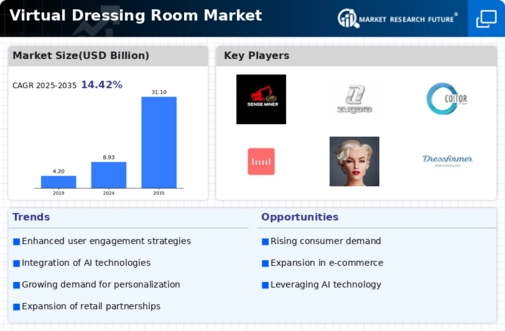Market Trends
Key Emerging Trends in the Virtual Dressing Room Market
Recently, there has been a remarkable surge in the market trends of virtual dressing rooms that have revolutionized how consumers shop for clothing and accessories. Traditional brick-and-mortar retailing is being reshaped using this innovative technology that provides users with a virtual interactive experience. One major driver behind this market is the demand for personalized shopping experiences that are full of color. Adoption rates have also risen due to increasing e-commerce activities spurred on by internet marketing platforms. In recognition of this shift in consumer behavior from physical stores to online platforms where people purchase products, retailers understand the importance of improving the digital shopping experience. Virtual Dressing Rooms enable customers not only to imagine themselves in certain garments but also reduce return rates, which remain one of the most critical concerns in web-based retailing. Another major trend involves incorporating augmented reality (AR) and virtual reality (VR) technologies into Virtual Dressing Rooms.AR coupled with VR enhances the overall customer experience by providing more lifelike and immersive environments. While AR can overlay virtual clothing onto actual people in real-time, VR establishes a complete virtual reality system where customers can explore any product. This fashion trend, however, is not peculiar to fashion retailers alone. Still, it has also expanded into furniture and home décor, allowing customers to place items in their homes before purchasing them virtually. Furthermore, the increasing emphasis on sustainability in the fashion industry has affected virtual dressing room trends. Consumers are becoming more mindful of their environmental footprints, and the try-on apparel experiences can reduce the ecological impact of traditional shopping methods. Besides, artificial intelligence (AI) advancements play a crucial role in shaping the virtual dressing room market. AI algorithms analyze customer data, such as body measurements and style preferences, to provide personalized suggestions. Such a degree of customization enhances the overall shopping experience while promoting customer loyalty at large. In order to remain competitive, retailers invest heavily in AI-driven virtual dressing room solutions that make their service more individualized and efficient.

















Leave a Comment